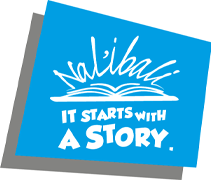Barbara Comber is a Research Professor in the Faculty of Education at Queensland University of Technology in Brisbane, Australia. She is particularly interested in literacy education and social justice and recently visited South Africa, further sharing her work on the topic:
Sharing stories of one kind or another with the next generation is something intrinsic to everyday life in most communities. Listening to parents and grandparents, aunts and uncles and community elders is a crucial part of young people forming their identities. Increasingly, such narratives not only include oral accounts shared by families or written narratives by authors, but stories produced and distributed through varying media too. Children’s story worlds might come from television, radio, the Internet, mobile phones, newspapers, schools, books, peers – all over!
However, in terms of literacy and social justice, some stories count more than others and it is important that children learn to interrogate the stories that prevail in their community. Children’s stories typically convey versions of morality, gender, age, race, authority, places and so on. They also convey what counts as normal, what counts as desirable and what counts as good and evil. In the process, versions of heroes and heroines, relations between people, people and places and people and success are made.
These stories and interactions act as cultural teachings because they tell our youth what matters and how things should be. They also enshrine selective memories as significant. Stories are often taken for granted as a good thing for the young, both because they entertain and because they induct youth into ways of seeing the world and ways of thinking. However, we always need to ask: Which stories are being told in which media to which audiences? Who is telling this story? Is there another way of telling this story? Who is listening? What is being heard?
Some stories are ephemeral, some sacred and some gross generalisations. Some are considered ‘high literature’ and others as popular culture. Some are specially produced for children. Regardless, teachers, as well as parents and caregivers, need to examine the kinds of stories our children are being told in terms of whose interests are served. Narrative is essential to how we make sense of our world and our places in it, and, in these times when communities are increasingly linguistically and culturally diverse, we need to ensure that our children’s own stories and those valued by their communities can be explored in educational institutions as well as at home. The more stories that get told, the more that get heard, and the more that are questioned, the richer their educational and developmental potential.
